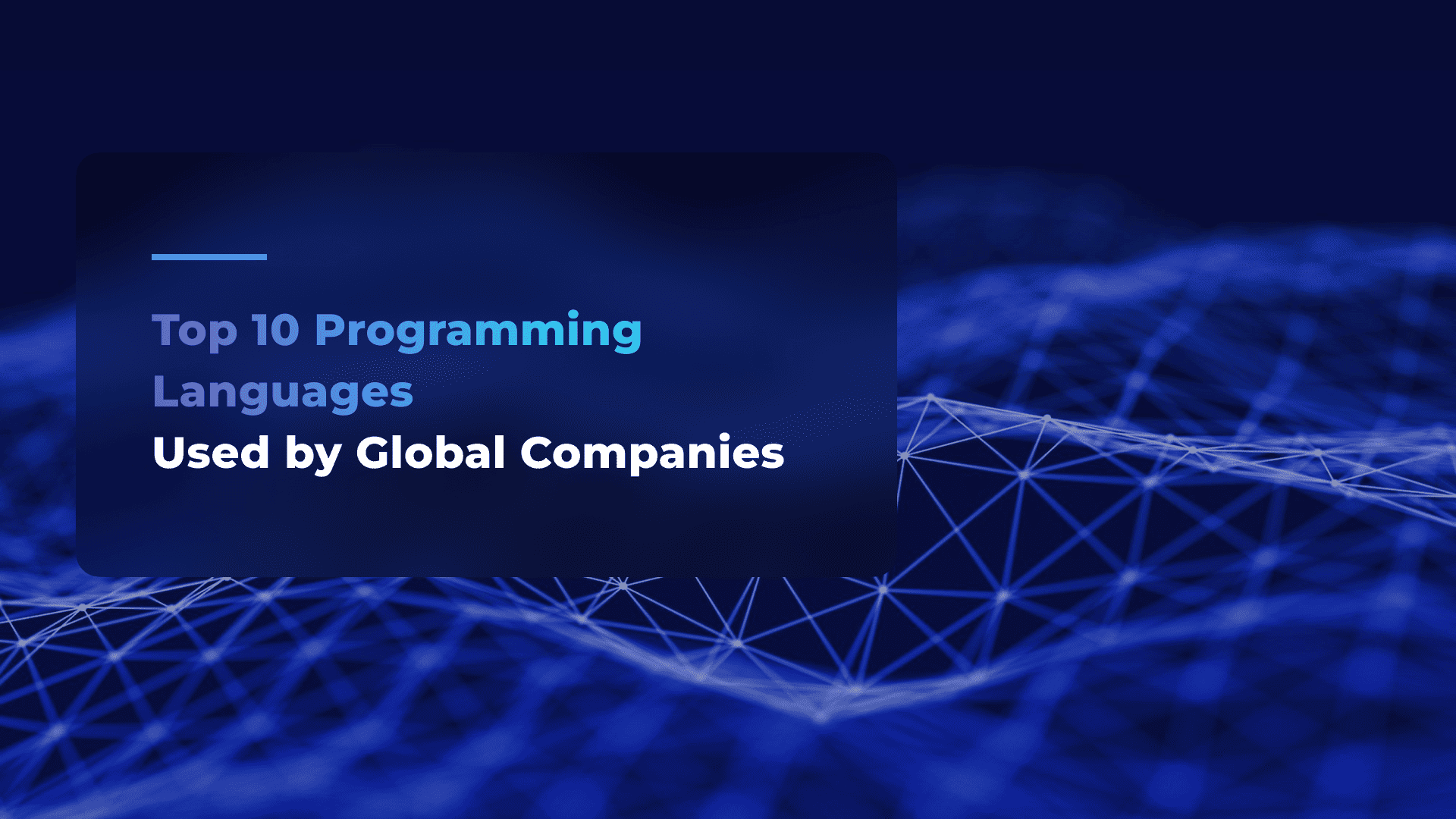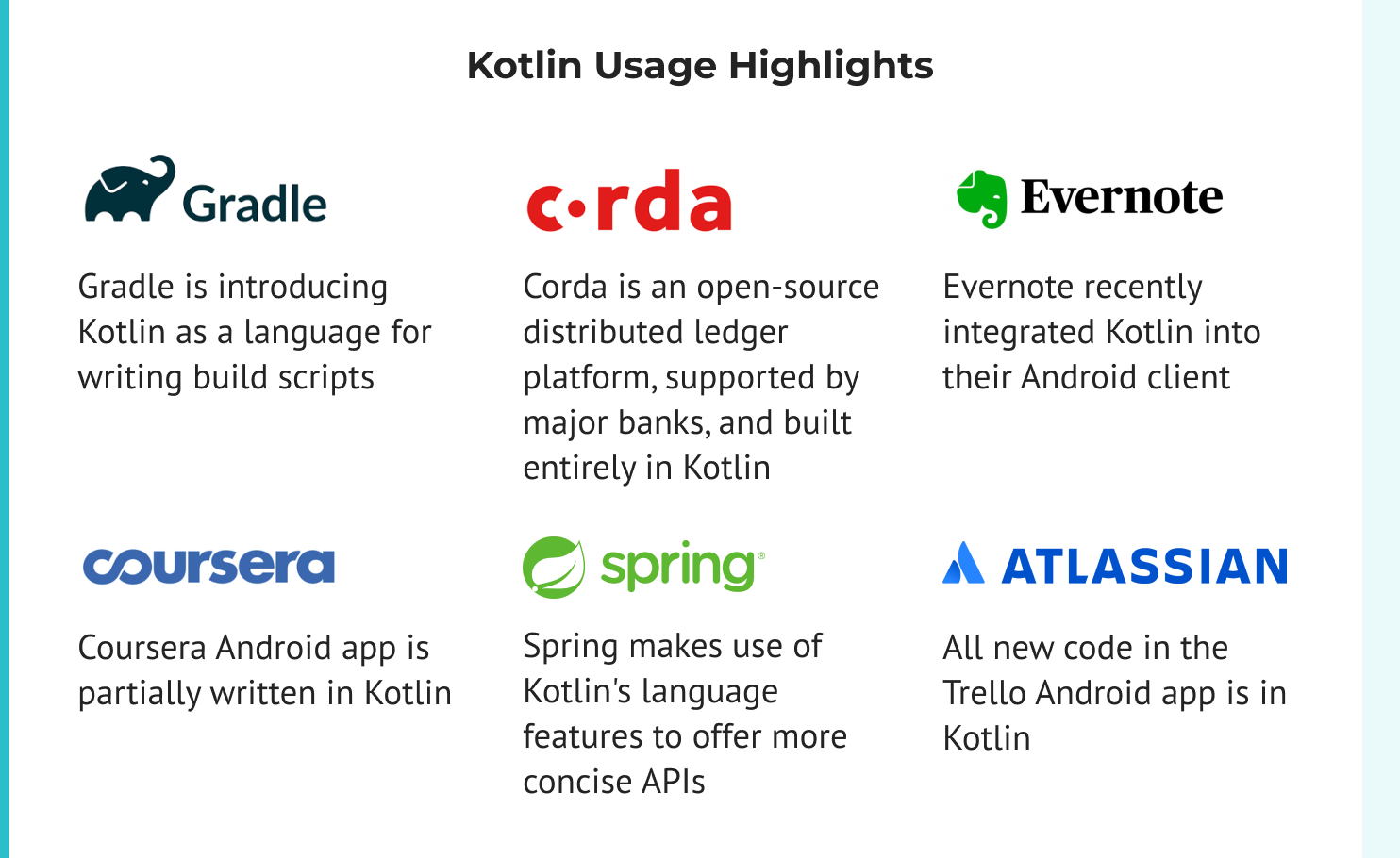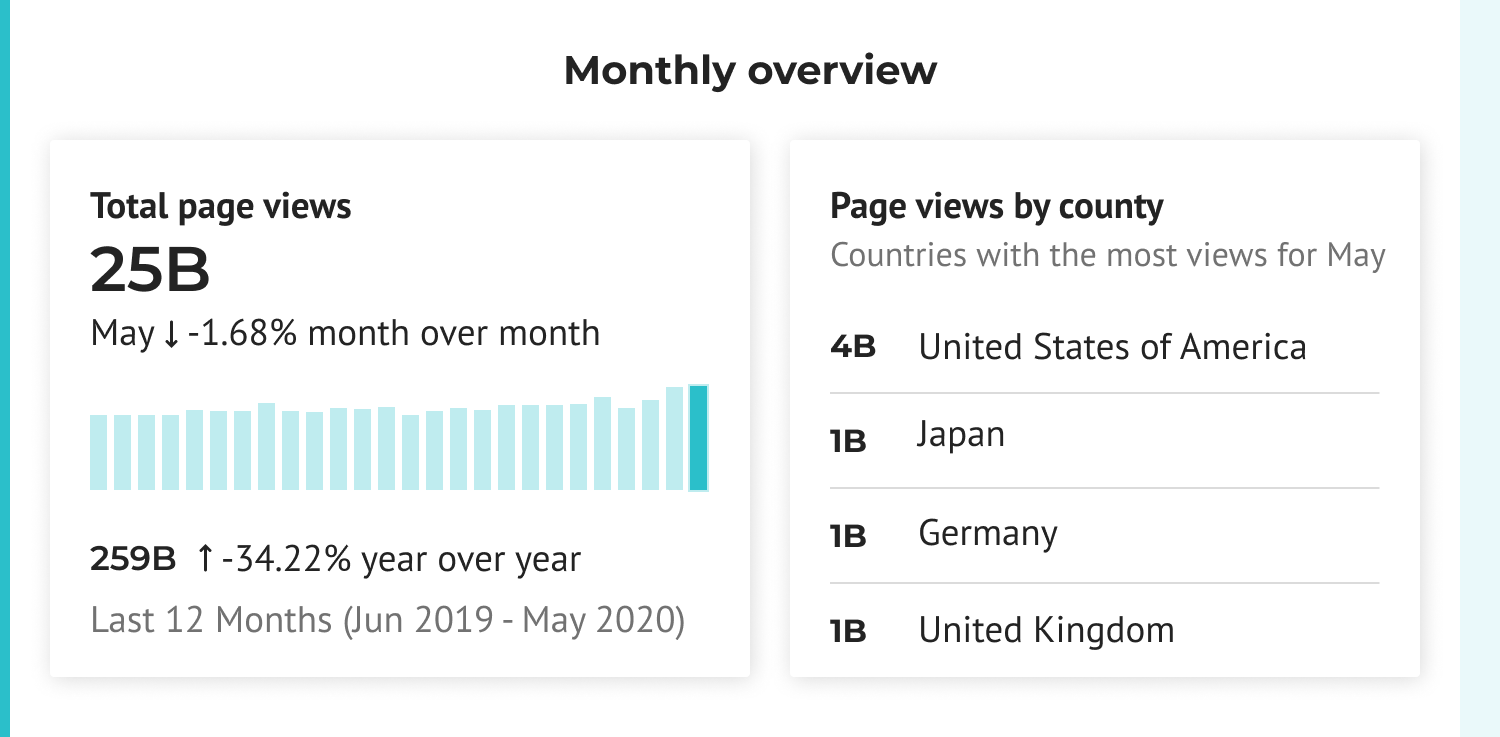Top 10 Programming Languages Used by Global Companies

The total number of existing programming languages is estimated from 250 to about 700.
This plethora started with machine language, which was merely a series of numbers directly telling the computer what to do. But it was hard for humans to understand that type of coding. So gradually various assembly languages appeared. These were considered low-level programming languages and were only able to run on the specific computer architecture or operating system they were initially created for.
The turning point for the IT industry was the appearance of Fortran — the first high-level programming language, which was commercially released in 1957. Fortran allowed a certain level of abstraction and portability, which opened new opportunities for engineers. It would become a base for dozens of other programming languages between 1960 and 1980.
Ten years after Fortran, what we now know as object-oriented programming (OOP) came into existence. One of the ideas is that the coiner of the term, Alan Kay, was inspired by the structure of biological cells while inventing some of the first OOP languages.
The OOP approach gave rise to even more languages appearing. Some were developed for each platform (like C for Unix or Basic for Windows), while some were made for certain specific tasks (e.g., SQL for database management).
Web and mobile development triggered the creation of even more languages. Almost everyone has heard about HTML and CSS, the technologies behind the bright web browsing experience. Less known to the public are Kotlin and Swift — the languages that came into use with the rise of mobile development.
Out of hundreds of programming languages available, still there is a limited list of the most popular and demanded ones.
World's Top 10 Programming Languages
Research conducted by Coding Dojo highlighted the most popular coding languages among the so-called unicorns — the world's top tech companies with a market estimation of over $1 billion.

The study shows that among hundreds of possible options, the most commercially successful companies opt for quite a small number of technologies. Let’s talk about the top ten most in-demand programming languages in detail.
Python

Python is an open-source OOP language with diverse applications. It is used in web and mobile development with its full-stack frameworks like Django, Pyramid, TurboGears, or microframeworks like Bottle, Flask, Falcon, and others.
Python is also extremely popular among data scientists or AI specialists: the capabilities of the technology for data analysis, AI development platforms, and deep learning are hard to overestimate.
Python is also extremely popular among data scientists or AI specialists: the capabilities of the technology for data analysis, AI development platforms, and deep learning are hard to overestimate. Explore the best AI tools for developers to see how Python and other technologies are shaping modern applications.
Python-based mobile apps’ APIs are compatible with all the major operating systems. Some of the Python libraries, e.g., Kivy, are a great tool for the creation of cross-platform mobile apps.
And also, Python has special libraries for creating graphical user interfaces (GUI). Python interface for Qt (PyQT) is a very often-used tool for this. It unites the powerful Qt Design studio and a set of Python modules for app development.
Advantages of Python
- Simplicity and high productivity. Easy-to-learn syntax, handy debugger, and the ability to unite other languages contribute to it being one of the most productive and cost-effective solutions for large companies. And it takes fewer code lines to resolve complex problems, for example, a demand forecasting for Instacart’s over 500 million users.
- Free Licensing. Python is an open-source technology that implies zero cost for developers. Moreover, it has a strong community that constantly creates pre-built solutions based on this language.
- Pre-built libraries. Standard libraries and thousands of third-party ones can be used for almost any application domain, be it web, desktop, mobile apps, Machine Learning, etc. The extensive choice of libraries was one of the reasons Netflix developers turned to Python more often, even though the company gives them freedom of choice and they might have opted for something else.
Disadvantages of Python
Just like many high-level languages, it is slower than C or C++. On the other hand, Python is an extendable language — you can code performance-critical modules of the application in C or C++ and use them in Python code.
Sometimes Python is not the best fit for multi-threaded applications. The language has the global interpreter lock (GIL) that allows only one thread to be executed at a time.
Big Companies Using Python
Python is one of the main programming languages used by Facebook. It tops the list both for infrastructure management and for third-party Facebook developers. Some of the company’s proprietary projects are also written in Python, for example, Facebook Business SDK.
JPMorgan, one of the world’s largest investment banks, is another example of a huge corporation using Python. The company’s Athena trading platform utilizes 35 million lines of Python code created by 1500 developers for price monitoring, risk management, and other trade-related matters.
Quora developers also chose Python because of its ease of writing and readability. They used such frameworks as Django and Pylons. Another popular social platform built on Python is Reddit. Initially, the platform was developed in Lisp, but in half a year’s time, programmers decided to recode their website into Python. The main reason for that was a wider range of code libraries and the language was more flexible.
One of the most popular global social networks, Instagram, uses the Python Django framework for its backend. The company used to state that it has the largest Python deployment in the world. Also, Python is one of the technologies supported by Pinterest and Eventbrite.
Java

Java is a programming language that beats most of its competitors in ratings all over the world. This is a fast-performing, object-oriented programming language that is used by many famous companies, such as Goldman Sachs, eBay, Google, and many others.
Also, investment banking, which is a high-risk, performance-dependent business, turns to Java for safety and productivity. For the same safety reasons, this language was chosen to be used for governmental services.
Advantages of Java
- Ability to scale effectively. The applications perform well even when the load increases significantly. Some time ago, Bob Lee, who later became a CTO of Square, famously said that the web was “on the cusp of a Java renaissance.” He explained that Java is “the only choice when it comes to the requirements for a company like ours [Square] — extreme performance requirements and extreme scalability requirements. There is no visible alternative.”
- Extensive framework base. A very thorough elaborated toolkit with the support of Oracle (the owner of the technology) is right at hand for various tasks.
- Compatibility with Android. Since mobile is becoming the number-one format for many types of business (taking over from desktop), one technology working well with both is a huge plus.
Disadvantages of Java
The other side of Java is that it is becoming pricier. Unlike various open-source solutions, Oracle limits free access to it step by step. Also, Java demands a lot of memory, and it takes additional tools to provide a nice visual user experience for desktop applications.
Big Companies Using Java
Twitter is one of the brightest examples of Java usage. The business started with Ruby on Rails and then switched to Java. Exactly this helped them set a record for the number of tweets in one second.
Among the popular companies using Java one might name Airbnb (the back-end part is mostly written in Java). And, of course, Google. Java is at the heart of Google Web Toolkit, Android-based apps are often written in Java, and even the well-known Gmail has Java code inside.
JavaScript

JavaScript (JS) is one of the most popular programming languages for web development. This is both client-side and server-side technology. And it is widely used for interactive multimedia-enhanced web pages. Combined with HTML5 and CSS, JavaScript turns any web page into a lively experience.
Advantages of JavaScript
- Speed. JavaScript supports an asynchronous programming paradigm. By being event-based its code fragment could be executed when some event occurs, for example, when a user clicks a button. It allows for significantly offloading CPU and building interactive, fast, and responsive web interfaces. It allowed Netflix to accelerate some UI-based services, and now the company uses this technology for their client-side processes.
- High-quality control. The code is easy to debug and test.
- JS frameworks allow users to create unique, rich media web experiences with easy-to-use tools.
Disadvantages of JavaScript
JavaScript has its cons, and one of them is safety. The code runs directly in the browser and sometimes can be used with bad intentions. Besides, each browser interprets JS code differently, so it takes additional testing in all major browsers to ensure smooth work.
Big Companies Using JavaScript
The tech giant Google uses JS for world-known services like Gmail and Google Docs. Another famous JS framework – AngularJS – was developed by Google itself. The same happened with PayPal. The company tested NodeJS for the front-end part of their pages and liked the outcome so much that it created its own JS framework – kraken.js. Now the framework dev team at PayPal has 104 repositories on GitHub.
Another company using JS is Groupon. Firstly, they built their platform in Ruby, but developers faced difficulties in speed and maintainability. Therefore, they had to switch to JavaScript. Now the website consists of over 20 Node applications. One more case when the company was forced to change the coding language happened with Walmart. The company started with Java. However, they needed a lighter solution for their mobile version. So they decided to use NodeJS.
C\C++

C++ is a static, general-purpose, object-oriented language. It is used in many areas (for database management systems, operating systems, medical applications, and much more), but its most popular fields of application are systems programming and embedded systems.
Advantages of C\C++
- Portability. One can run the same C++ code on all major operating systems without errors.
- Object-oriented structure. It provides reliability and options for code reuse. A Google engineer, Alex Martelli, explained how Google got started using C++ in their tech stack: “It all got started, I believe, because the very earliest Googlers (Sergey, Larry, Craig, …) made a good engineering decision: Python where we can, C++ where we must.” It means that very often C++ is a necessity.
- Functional libraries open opportunities to build network applications, microservices, and other types of projects.
Disadvantages of C\C++
On the other hand, the concept of pointers in C++ makes it in a way complicated. The wrong application of pointers can cause a system failure. Some security issues also arise because of it. Moreover, unlike Python, Java, and other popular languages, C++ does not have a garbage collector.
Big Companies Using C++
Nevertheless, the world's top companies still use C++ in successful projects. For example, Adobe Systems developed the well-known Photoshop Illustrator. C++ is also the technology behind PDF, which is vastly employed by Adobe Corporation.
One more example of the use of C++ code is actually Windows OS by Microsoft. Almost all versions of this OS are written in C++. In addition to it, the language is used in Microsoft Office and Internet Explorer, which makes the technology almost indispensable for the company.
Such applications as Mozilla Firefox and Thunderbird are written in C/C++.
Ruby

Ruby is an open-source, dynamically typed, object-oriented language. The technology is considered a great fit for web development and is mostly used for the back-end.
Advantages of Ruby
- Time efficiency. For this reason, developers often use Ruby for rapid application development (RAD). Ruby was the initial technology of Twitter. And even despite the fact that several years later the company switched to Java for the sake of scalability, there’s still a lot of Ruby code employed.
- Stability and predictability. This has been one of the reasons why Etsy, one of the largest global e-commerce platforms, chose Ruby to work with its database of over 50 million users.
- Strong focus on testing. The technology has its own testing frameworks.
Disadvantages of Ruby
Among the Ruby cons, developers name poor runtime speed, which affects performance and scalability. This open-source technology lacks sufficient well-elaborated documentation.
Big Companies Using Ruby
One of the top global companies in the hospitality business – Couchsurfing – employs Ruby for its backend. This ensures stable work for its client base of over 14 million users.
Another bright case of using Ruby is Shopify. The global online e-commerce platform hosts about 1 million businesses and serves over 218 million shoppers. The fast speed of the shopping experience is a cornerstone of their success, so reliable back-end technology is very important.
Ask.fm also turned to Ruby for their back-end part. The other big platform written in this coding language is Dribbble. Such companies as Fab, Hulu, Kickstarter, and UrbanDictionary used Ruby for their websites as well.
Go

Go, or Golang is a relatively new open-source programming language. It is static and contains its own testing tools and garbage collection that frees developers from the memory management burden.
Advantages of Go
- Simplicity. Its syntax resembles C-style languages, and the code is considered simple yet scalable. Go is a good option for complex projects. The app development platform Fabric’s mobile analytics SDK is written in Go.
- Built-in testing. The video streaming service Dailymotion chose Golang exactly for this reason and uses it for the automation of APIs and End-to-End test cases. They conduct hundreds of automation tests every month using Golang.
Disadvantages of Go
On the other hand, Go does not have two decades of history. That’s why it might be rather complicated to find libraries or documentation on it. For example, there’s no GUI library. Also, the lack of generics makes it more difficult to reuse the code.
Big Companies Using Go
There are several top world companies using Go. One of them is the leader in file hosting – Dropbox. The company even created its own set of libraries to handle language inefficiencies.
The other one – SoundCloud, the largest music and audio platform — uses Go for various services including the proprietary deployment system Bazooka.
One more successful example is SendGrid, which managed to benefit from using Go — the company processes over 500 million messages a day.
Kotlin

Kotlin is a modern programming language that fits well for virtually any type of development, be it server-side, mobile, web, etc.
Advantages of Kotlin
- Concise. It takes fewer code lines per useful action. For example, the famous Spring framework by Pivotal chose Kotlin to provide more concise APIs.
- Compatibility with Java. This opens doors for the Java virtual machine and for Android development. In 2019 Google announced not just support for Kotlin but called it a preferred language for Android app development. Also, Kotlin is often used for Android development. Recently, Google announced that it will now officially base its Android App Development process on Kotlin.
- Ease of code maintenance. The language also works well with many popular IDEs, e.g., IntelliJ IDEA or Android Studio, and the code is easily maintainable. Gradle Build Tool provides a great opportunity to productively build Kotlin Projects.

Disadvantages of Kotlin
The cons of Kotlin are derived from it being almost simultaneously adopted by top companies. A mere lack of experts makes usage of this technology more complicated. Though similar to Java, Kotlin is still not the same, and a quick shift is hardly possible. Some developers also state that the changing compilation speed also influences productivity greatly.
Big Companies Using Kotlin
As for big companies, Kotlin is one of the major technologies behind the famous project management solution Trello. The company started using Kotlin in October 2016 with 15% of Kotlin code and gradually increased the share to 30,8%.
Another example of a big company using Kotlin is Caviar, the food ordering platform by Square. In 2019 Caviar was purchased by DoorDash for $410 million in cash and preferred stock.
PHP

PHP is one of the top programming languages for web development. It is an open-source, general-purpose language that runs on the server side but can still contain some HTML additions.
Advantages of PHP
- Cross-platform technology. It can be used in all major operating systems and keep productivity high.
- Great database management and support of many types of databases.
- Fast and efficient programmer workflow. One of the large companies using PHP – Slack – provides an example: “For a typical Python application server, e.g., the debugging cycle will look something like ‘think; edit; restart the server; send some test requests’…I claim that PHP’s simpler ‘think; edit; reload the page’ cycle makes developers more productive,” says Keith Adams, a member of the Slack engineering team.
Disadvantages of PHP
Even being used by millions of websites all over the world, PHP still has its flaws. First, there are concerns regarding the security of the technology due to its open-source nature. Second, PHP does not upgrade to modern demands as fast as desired. It does not have libraries for emerging areas like Machine Learning, which might be one of the reasons for its declining popularity.
Big Companies Using PHP
Nevertheless, the above-mentioned Slack and other big companies like Wikipedia are quite happy with PHP. The huge media project generates hundreds of billions of page views, and all their requests are handled with PHP.

Objective-C
One of the most popular “Apple-based” languages – Objective C – is used for iOS development. It’s a combination of C and the semantic construction of Smalltalk. As Apple states, this language used to be the primary technology to create software for the corporation.
Advantages of Objective-C
- Compatibility with C. As far as it is based on the C language, it's easy to integrate product parts written in C or C++ with ones written in Objective-C.
- Support for the old versions. That’s why this technology is highly valued for its stability.
Disadvantages of Objective-C
The language is overly verbose, which is fair — it is quite old — but this also may be the cause of the number of experts in Objective-C gradually decreasing. There’s also the issue with namespacing, or lack thereof, that unnecessarily complicates development; all classes of an app have to be unique universally. Identifying and fixing bugs caused by the lack of strict typing is not a breeze.
Big companies using Objective-C
Quite a solid list of companies worked with Objective-C for many years: Uber, Instagram, Pinterest, Slack, and Snapchat, just to name a few. But all of them gradually switched to Swift, since it has more modern features, it’s easier to learn the syntax, and it provides support from the Apple corporation.
Swift

The overtaker of Objective-C, Swift is a fast and interactive open-source programming language and, as Apple puts it, a newbie-friendly one. It is one of the newest ones, created in 2014, and it is used for building apps for the whole Apple ecosystem: iOS, Mac, Apple TV, and Apple Watch.
Advantages of Swift
- Speed. It’s more than two times faster than its predecessor, Objective-C.
- Up-to-dateness. Swift has many modern functions that efficiently manage memory, prevent system crashes, and accelerate development.
- Cross-platform. The language is Linux-compatible and can be used together with Objective-C code.
Disadvantages of Swift
The language was introduced in 2015, which makes it relatively young and lacking in the talent pool (which may be a nice opportunity for new programmers). Also, Swift cannot be used for apps made on iOS6 or earlier.
Big Companies Using Swift
There are many large businesses using Swift code. One of them is Airbnb. The company made a decision to create all the new features for the iOS version in Swift.
Another world-famous company – Uber – has also switched to Swift. As the programming-systems research scientist at Uber, Raj Barik explained to Business Insider, Objective-C lacked reliability and didn’t fit enough in the project architecture.

Wrap Up
There might be close to a thousand programming languages, yet only a handful of them are frequently used. For this review, we used an assessment of twenty-five Fortune 500 companies that show what languages they use in the development of their products.
The tech leaders of those businesses chose this or that technology for various reasons, relying on the same criteria: speed, reliability, and scalability. That is certainly what you should look for in technology, but also be guided by the demands of your company when choosing the most useful programming language for a particular project.
See below the infographic with the top languages used by the biggest companies and the most popular websites.







